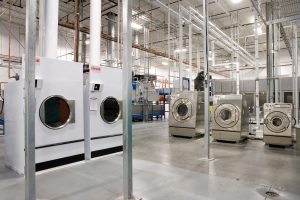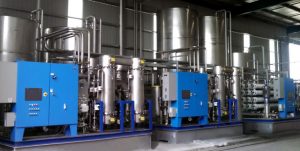It Pays to Be Eco-Friendly: Why and How to Reduce Your Industrial Carbon Footprint
Protecting the planet isn’t a new concept by any means. But in recent years, it’s become more apparent that going green isn’t merely a passing fad. What’s more, environmental responsibility is something that consumers are taking very seriously due to the dire consequences we might otherwise face here on Earth.
 However, individual efforts are only one piece of the puzzle. It’s essential for businesses across the board to make changes that can reduce CO2 emissions (and, thereby, environmental impact) if we want to have a chance of preserving our home and reversing the damage we’ve caused over time.
However, individual efforts are only one piece of the puzzle. It’s essential for businesses across the board to make changes that can reduce CO2 emissions (and, thereby, environmental impact) if we want to have a chance of preserving our home and reversing the damage we’ve caused over time.
Some of these eco-friendly adjustments are relatively simple. Switching out traditional incandescent bulbs for LEDs, for example, or reducing one’s reliance on printed documents are often cited as popular tips for businesses looking to go green. But while these switches are easy to perform and can be effective, these aren’t the only steps organizations can or should take.
There’s a pervasive idea that more extensive changes aren’t worth the effort. But in many cases, becoming more eco-friendly can pay off — both literally and figuratively. That’s certainly true for many enterprises operating within the industrial sector. Although they may take a bit more coordination, these efforts can often reduce costs significantly while reducing one’s carbon footprint in a major way.
If you still need convincing, you aren’t alone. After all, why should you change what’s working for your business? When you look a little closer, you might discover that traditional methods are less efficient (or more wasteful) than you ever realized. And that can be a problem for both the environment and your bottom line. First, let’s talk about why those operating in commercial facilities and other industrial businesses should care about environmental impact. Then, we’ll outline just some of the ways you can potentially minimize your carbon footprint.
Why Should Businesses in the Industrial Sector Minimize Their Environmental Impact?
Some business owners assume that going green is akin to jumping on the bandwagon. It certainly has become more prevalent in recent years — and not every organization promotes environmental responsibility for solely ethical reasons. The practice of “greenwashing,” which involves misleading customers into believing that a business is eco-friendly, has become more common because the consumer demand exists. And while not all businesses are completely honest about whether their practices truly protect the environment, there are plenty of reasons to embrace sustainability in a deliberate and forthcoming manner.
The aforementioned consumer demand is reason number one. Customers care that the businesses they support are doing whatever they can to tackle climate change. In fact, a Nielsen report from 2018 found that 81% of global consumers feel strongly that companies should protect and improve the environment. Whether you work directly with end consumers or your clients are other businesses, it’s likely that a concern for sustainability will factor more heavily into purchasing decisions in the coming months and years. To compete, rather than get left behind, you may need to show exactly what your business is doing (or will be doing) to offset your own impact.
 Another main reason to embrace environmental friendliness? The potential savings that come along with going green. Ultimately, improving energy efficiency and decreasing unnecessary waste will translate to lowered costs. Certain sustainable efforts, like switching to solar power, will require more of an investment upfront. However, these changes will often pay for themselves in a relatively short period — and, in many cases, they can assist in reducing other costs you might not even have thought of. Many green initiatives will have an inherent domino effect, allowing you to save more and make more at the same time.
Another main reason to embrace environmental friendliness? The potential savings that come along with going green. Ultimately, improving energy efficiency and decreasing unnecessary waste will translate to lowered costs. Certain sustainable efforts, like switching to solar power, will require more of an investment upfront. However, these changes will often pay for themselves in a relatively short period — and, in many cases, they can assist in reducing other costs you might not even have thought of. Many green initiatives will have an inherent domino effect, allowing you to save more and make more at the same time.
It’s particularly important for industrial enterprises to be proactive about reducing their carbon emissions. Approximately 22% of all greenhouse gas emissions in 2018 were attributed to the industrial sector. According to the U.S. Environmental Protection Agency, these emissions primarily come from the burning of fossil fuels and from chemical reactions used to turn raw materials into goods. Industrial emissions count for a far greater percentage than emissions from local businesses and residences. Our carbon emissions keep increasing, as well, thanks to the vicious cycle of climate change. When summers become hotter and winters become colder, we have to use more energy to compensate — and that means our environmental impact becomes even greater.
That’s why it’s up to large corporations and individual business owners alike to facilitate change. At the most basic level, we need to care about the state of the world in which we live. But if you’re more concerned about brand perception, customer acquisition, or lowering costs, then it also makes sense to reduce your carbon footprint. Whether you’re involved in food production, manufacturing, commercial laundering, or another industrial center, it’s clear that now is the time to move towards environmentally sound practices. But knowing how to do that may seem overwhelming. That’s why we’re sharing some tips below that you can reference as you move closer toward sustainability.
What Steps Can Be Taken to Embrace Industrial Eco-Friendliness?
Now that it’s clear why it’s so essential for those within the industrial sector to prioritize environmental harms, you might be wondering exactly what your enterprise can do to accomplish those goals. While there are a number of universal ideas that can apply to virtually any business looking to go green, there are certain steps that should be considered by organizations that specialize in manufacturing, processing, or certain commercial services.
Utilize Renewable Energy
By and large, corporations in the industrial or food and beverage sectors are huge consumers of energy. Not only does this mean they’re contributing a greater percentage of carbon emissions, but it also means they’re probably paying a lot more money for their energy use. In addition, fossil fuels, natural gas, and coal are finite resources. When organizations rely on these kinds of energy sources, they’ll end up harming the planet and harming themselves in the end.
A viable alternative is to utilize more sustainable energy sources. As mentioned earlier, this could include solar power — but it could also involve using wind, hydroelectric energy, fuel cell systems, biomass, and any other number of technologies that can reduce or minimize the reliance on traditional energy sources.
While making such a change might seem like an extreme step, keep in mind that the costs associated with finite resources will only increase over time. It all comes down to the law of supply and demand. And if you’re forced to pay more for fuel that will eventually run out, you’ll be doing yourself a disservice by not planning ahead. With renewable energy, you’ll obtain more control over the costs and the available supply — all while reducing the harmful impact that natural gas and fossil fuels can have.
Consider Remanufacturing Where Applicable
“Reduce, reuse, and recycle” is a common mantra adopted by those who want to embrace a greener lifestyle. But if your organization is responsible for manufacturing goods in any way, the concept of remanufacturing might be of interest. Remanufacturing essentially takes the “reuse” step to the next level by reclaiming certain used materials and either turning them into something totally new or using certain processes (like sandblasting or pressure washing, for example) to perform a thorough cleaning. When these techniques are performed, the reclaimed materials can be properly prepared for reuse and will literally be as good as new. Not only are these cleaning processes more cost-effective, but they’re certainly more eco-friendly than creating brand new components. Although remanufacturing may not be appropriate in every instance or for every corporation, it may be an alternative that has been overlooked in the past.
Upgrade Outdated Equipment For Efficiency
Buying new equipment just for the sake of having the newest models available is not an eco-friendly choice. If your equipment was purchased within the last few years and is still in good working condition, it doesn’t make sense to upgrade to a new model (even if it’s considered to be more eco-friendly). While you might feel good about the environmental impact stemming from that new machinery, don’t forget that the discarded equipment will cause your organization to be responsible for a lot of unnecessary waste. In that sense, it’s best to stick with what you have until you’re worried about more pressing matters like impending breakdowns, efficiency delays, or skyrocketing costs.
 Whenever possible, it’s more eco-friendly to have your current equipment repaired. However, if your equipment is nearing the end of its life or you have other concerns that are equally as pressing, it may be time to think about upgrading to a more energy-efficient model. If, for instance, you’re currently using an old boiler to perform essential operations, you may find that your energy consumption is through the roof. Not only will that drive up your costs significantly, but it can also thwart your attempts to reduce your carbon emissions. And that doesn’t even take the costs of maintenance into account.
Whenever possible, it’s more eco-friendly to have your current equipment repaired. However, if your equipment is nearing the end of its life or you have other concerns that are equally as pressing, it may be time to think about upgrading to a more energy-efficient model. If, for instance, you’re currently using an old boiler to perform essential operations, you may find that your energy consumption is through the roof. Not only will that drive up your costs significantly, but it can also thwart your attempts to reduce your carbon emissions. And that doesn’t even take the costs of maintenance into account.
Keep in mind that upgrading your equipment or technology can also allow you to reduce yield losses. This can help you improve productivity and efficiency all while lowering energy use and related costs. Again, it’s not advisable to upgrade your equipment if doing so isn’t truly necessary — but if there are justifiable reasons to do so, this may support your eco-friendly initiatives in the long run.
Opt For Green Building Materials
While there’s only so much you can do with an existing manufacturing plant or warehouse, the reality is that these facilities are being built all the time. If your organization plans to create a new plant or expand an existing facility, it’s worth considering whether green building materials should play a role in the construction process.
Many industry leaders have made the extra effort to have green industrial and manufacturing centers. Not only does this set these brands apart from the competition, but it can save money and help them achieve their environmental goals. While not every aspect of your operational processes can be 100% green, utilizing more sustainable materials in the construction of your facility can often offset your impact. Whether that means utilizing recycled and reclaimed materials or installing metal roofs, solar panels, and other energy-saving components right from the start, you’ll likely save money, reduce emissions, and improve brand perception throughout the process.
Examine Water Usage and Wasteful Processes
Another industrial area that’s often discounted is the use of water and the various processes used for dealing with waste. Enterprises that specialize in manufacturing, food processing, cleaning, laundering, and other services will typically use a great deal of water on a regular basis. And while water may be necessary to conduct these tasks, that doesn’t always mean it’s being used in the most efficient way.
In many cases, it may be possible to reuse water if it’s treated correctly and in an eco-friendly manner. Using ceramic microfiltration, reverse osmosis, or other systems can remove contaminants to meet wastewater treatment standards and reduce wastewater charges at the same time. In fact, the quality of this reusable water is sometimes better than fresh water supplied by a given municipality. In addition to improving quality, these processes can keep reusable water out of sewers, allowing organizations to keep costs down, reduce their environmental impact, and embrace greater overall efficiency.
Of course, it’s also important to reduce unnecessary waste in other areas. Whether that involves implementing a company-wide recycling and composting program, reducing the use of wasteful and single-use packaging, or re-examining the use of materials and techniques that have been a hallmark of company operations for years, it’s necessary to take stock of what you’re really throwing away and figure out whether there may be innovations that allow you to re-utilize the assets you already have.
Going Green Doesn’t Have to Be a Sacrifice
Many people are under the impression that they’ll have to sacrifice up in order to prioritize environmentalism. But the reality is that you’ll often get back a lot more than you give up. While you may need to adjust to the idea of putting eco-friendliness first, keep in mind that you can typically lower your costs, increase self-sufficiency, and improve overall performance when you made a plan to reduce your carbon footprint.
Once you have a clear idea of your current emissions, you can pick and choose the ideas listed above that will work for your business and that you can feasibly implement over time. Remember: going green is a journey — but it’s one worth embarking on.
To learn how we can help your corporation improve upon your processes while reducing your carbon emissions, please contact Kemco Systems today.

